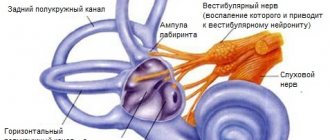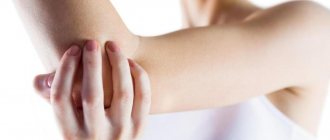Sleeping 18-20 hours a day is a pathology called sleeping beauty syndrome or Kleine-Levin syndrome . The disorder is accompanied by severe drowsiness, which is difficult to overcome. A person gives in to the call of the body and sleeps for as much time as possible.
It is quite difficult to wake a person in such a state. If you manage to do this, after waking up he will be overwhelmed, which is why the attack of irresistible drowsiness will happen again, and the person will fall asleep again for ten hours.
The article is for informational purposes only. If you have health problems, you should consult your doctor in person. Self-medication is unacceptable!
Description
Kleine-Levin syndrome is a rare and poorly understood disease. Cases of its occurrence are rare, and the exact causes are unknown.
Prolonged sleep with such a pathology is harmless to health. However, being constantly in bed interferes with normal life. A person’s performance decreases, problems appear in his personal life, and academic performance decreases.
Symptoms of the pathology arise and disappear spontaneously. After 25 years, the disease almost never occurs. With age, sleep disorders appear less and less often, and then suddenly disappear.
In ICD-10 , the international classification of diseases, 10th revision, Kleine-Levin syndrome refers to diseases of the nervous system, or more precisely, to a subcategory of sleep diseases. Sleeping beauty syndrome is indicated by code G 47.8
Cinderella syndrome
This syndrome has not been described psychiatrically, but the number of naive girls with high hopes coming to the metropolis is becoming so large that soon, it seems to me, this will need to be done. After all, the percentage of “happy outcomes” is actually negligible. How Cinderella manifests herself: it seems to her that persistent, hellish work might someday be rewarded with something magical. As a result, a person has excessive expectations from life and an accompanying hypertrophied self-pity: “Here I am, poor thing, I plow, plow, and they should give me a Mercedes every day for this... but for some reason they don’t.”
"Cinderella". Cartoon frame
Such girls know for sure that someday a prince will come on a white horse. He will turn a blind eye to the fact that she has poor parents who do not know how to eat beautifully or even formulate their thoughts correctly, and she herself does not yet have at least any education and, despite the large amount of literature she has read (a.k.a. good girl!), she is usually ashamed to speak in front of people. This Cinderella has great ambitions and believes that one day she will become a queen.
Often, the formation of Cinderellas is helped by pseudo-psychological teachings that you can influence your material life with good thoughts alone. There is a rational grain in such literature, but nothing happens from positivity alone unless you start learning, working and improving your own life with your own hands.
The main problem of Cinderella is precisely that, even if the Prince marries her, she will never feel like “first class”. Never. No matter how much you give her, the poor thing is still visible in her...
What should Cinderellas do? If you really want to marry a rich man, then put yourself in an environment where these people move around and they can notice you. The next stage: it is necessary to meet the standards, frameworks and expectations that are always present in this environment. They say that you can teach a hare to smoke, and you can become rich in an instant, but will you be happy from such a life?
In addition, I would think about why a person begins to reject his existing reality and say: “This is not mine, my life should be spent in a country castle.” All this is nothing more than a refusal to accept reality and feel happiness under given conditions. But real happiness and the ability to experience it concerns only the current moment, and not the future.
Symptoms
The symptoms are listed below in order of importance. The main signs of the syndrome are described first, then less significant manifestations are reflected in descending order.
- Daily sleep duration is more than 18 hours for 5-20 days in a row.
- Cases of hypersomnia - prolonged sleep - are repeated at least 1-2 times a year. That is, symptoms occur with a certain frequency.
- There is unbearable drowsiness, which has a bad effect on performance and quality of life. After a normal 8-hour sleep, a person’s condition does not improve.
- Decreased attentiveness.
- Increased appetite (most often increased cravings for sweets)
- Increased sexual desire.
- Disturbed perception of reality
- Amnesia.
- Anxiety.
- Apathy.
- No enuresis.
- Depression.
- Hallucinations.
- There are symptoms of other parasomnias - sleep disorders.
Note that sleeping beauty syndrome is rarely associated with epilepsy, chronic stress or sleep apnea.
Interesting fact: Kleine-Levin syndrome most often occurs in teenage boys and men aged 18-25 years.
Increased sexual activity and increased appetite are important criteria for sleeping beauty syndrome. However, these signs do not 100% indicate the disease.
In the study, some women experienced the disorder before their menstrual cycle. However, in their case there were other symptoms - increased appetite, increased sexual desire and depression. They also experienced multi-day but rare episodes of hypersomnia, which is characteristic of sleeping beauty syndrome.
With a sleep disorder, aggressiveness, irritability, and a negative reaction to light and noise are noted. In addition, sweating, darkening of the skin around the eyes, and a blue tint to the skin of the hands and feet may occur.
Duration of the disease
This is a chronic disease for which there is no cure. Episodes may occur every 3-6 months. They last for 2-3 days or more. The maximum period was six weeks. In the intervals between them the person looks quite healthy. Apart from the violations described above, he is no different from his peers. However, periodic loss from real life has a strong impact. Such people are developmentally delayed and cannot work fully. When the patient wakes up after an attack, he does not recognize anyone, does not understand anything. This continues until it is completely completed. Usually, over time, relatives begin to notice the approach of an attack. The patient becomes more aggressive and begins to eat a lot, as if he is stocking up for the period of hibernation.
Causes
The exact causes of the disorder have not been determined, so experts only suggest a connection between the disease and other pathologies.
Let us describe the factors that increase the risk of Kleine-Levin syndrome:
- Diseases and tumors of the nervous system (infectious, autoimmune encephalitis, pathologies of the hypothalamus - the part of the brain responsible for the sleep-wake cycle).
- Head injuries.
- Metabolic disease.
- Pathologies of the endocrine system.
- Autoimmune diseases.
- Chronic stress.
- Respiratory tract infections.
- Consequences of anesthesia.
- Genetic factors causing the death of “awake” nerve cells. In this case, there is also a deficiency of orexins , neuropeptides that affect sleep.
- Narcolepsy - falling into sleep out of the blue.
Statistics
In total, 1000 patients with this diagnosis have been registered in the world today. Of these, 70% are men. Medicine cannot help them in any way, so their relatives have to keep a round-the-clock watch, quit their jobs and forget about a normal, ordinary life. It should be noted that in most cases the symptoms gradually soften and become less pronounced. While the first attack may last more than 10 days, subsequent ones are usually shorter. The period of remission between them increases, however, bulimia may well cause excess weight gain.
Diagnostics
If you notice Sleeping Beauty Syndrome in yourself or a loved one, you should consult a doctor. The problem is dealt with by neurologists and somnologists .
After examining and asking about symptoms, the doctor will send the patient for polysomnography - sleep diagnostics at the medical center. To undergo it, the subject comes in the evening to a specialized institution, where he is prepared for bed with the equipment connected. Before the procedure, sensors are attached to it that monitor breathing, pulse, oxygen levels in the blood, brain activity, etc. The data is transmitted to the medical staff’s computer, with the help of which specialists monitor sleep indicators in real time.
On polysomnography, sleeping beauty syndrome is manifested by a reduction in REM sleep . Because of this, the quality of sleep deteriorates. Roughly speaking, 8 hours of sleep in such a patient is equivalent to 2-3 hours of rest for a healthy person. And to get the norm of healthy sleep, patients with Kleine-Levin syndrome sleep more than 18 hours.
Polysomnography also shows delays in sleep phase changes. It turns out that the next stage of sleep does not occur for a long time, and a person can stay in one phase for hours.
What is REM and NREM sleep?
Additionally, for diagnostic purposes, MSLT testing (multiple sleep latency test) is performed, which determines a person’s need for sleep. MSLT is usually performed after polysomnography.
During the MSLT test, the patient tries to fall asleep several times over a certain period. Specialists located nearby use polysomnographic equipment to record the time of each fall asleep. The faster a person falls asleep, the more this indicates sleeping beauty syndrome. Pathology is considered when the average time to fall asleep is less than 5 minutes.
Sometimes the patient is sent for an EEG - electroencephalography . However, research usually does not show significant changes in the brain in this disorder.
Computed tomography of the brain performed during an attack of hypersomnia demonstrates dysfunction of the hypothalamus. Recall that the hypothalamus is responsible for the sleep-wake cycle.
Kolobok syndrome
Not described in the world classifier. We will talk here about the complex of an insecure but very hot-tempered person. Such people are afraid of the reaction of their interlocutors, they usually say something and immediately leave, it is important for them to say, but even more important is not to get hit on the head for it or simply not to hear the other person’s answer.
"Kolobok" Cartoon frame
Sometimes Kolobok syndrome can manifest itself in frequent changes of partners: you’ve been with one, got tired or disappointed, and ran to look for another. Koloboks are often among mother's boys. He first runs away from his mother to the girl and stays with her until she offends and offends him, and then he runs to his mother again, because she has already forgiven him. As soon as he finishes off his mother, he will run to his friend, and this can go on forever, as long as the other half can withstand his wanderings, and if he can’t stand it, then Kolobok is not very upset, he quickly begins to look for another. Sometimes they are even proud of their care and consider themselves independent. Such people cannot stand negativity; it hurts them very much when they feel bad. It is difficult for Kolobok to admit that he has done something wrong, so he will constantly be in search of a kind mother who will not scold him.
Treatment
Sleeping beauty syndrome is not treated with any special method. They only affect the symptoms and frequency of attacks of the disease.
To relieve the disorder, psychostimulants , most of which are prohibited for free use. Drugs of this pharmacological group relieve drowsiness well, but have a huge list of contraindications and side effects. These medications do not improve the emotional state, which is important in Kleine-Levin syndrome. Therefore, their use can be temporary, and only as prescribed by a doctor!
Sleeping beauty syndrome can be treated with anti-epilepsy medications.
To treat the disorder, medications used to normalize sleep were also prescribed. However, these drugs had little effect on attacks of Kleine-Levin syndrome.
Symptomatic treatment includes psychotherapy . This includes psychoanalysis, working with increased sexual desire, and normalizing eating behavior.
Additionally, nootropics are prescribed to improve brain function and mood stabilizers - drugs that normalize mood. These drugs stimulate thought processes, relieve irritability and aggressiveness caused by the syndrome. However, such drugs are rarely used.
What it is
Sleeping beauty syndrome is also called Kleine-Lewin syndrome, named after those who discovered it. This is a condition in which a person spends most of his time sleeping. Sleep lasts from several days to several weeks. Wakefulness takes a very short period, during which the patient behaves extremely inappropriately. He shows aggression, simply sweeps away all the food in his path.
In the intervals between sleep and wakefulness, a person is the same as usual. Except that sleep can overtake him at any time and in any place.
In world medical practice, 200 cases of Kleine-Levin syndrome are known. People started talking about him for the first time in 1786. Then the research was carried out by the French doctor de Beauchaine. In 1925, Willi Kleine, a German psychiatrist, took up the description of the pathology. He compiled a detailed description of the signs and clinical picture of the syndrome based on work with 9 patients.
In 1936, Max Lewin, a neurologist from the United States, identified a connection between periods of hibernation and inappropriate eating behavior. In his opinion, the “sleeping beauty” syndrome is a neurological disease that has nothing to do with psychiatry.
This is interesting: Unknown facts about inventions
How it manifests itself
Sleeping beauty syndrome is considered a disease of the young. Most often, the disorder manifests itself in adolescence, mainly in boys 12-16 years old. But as soon as the hormonal changes are completed, in almost all cases the symptoms completely disappear.
Patients with Kleine-Levin syndrome do not wake up for 18-20 hours, and in the most severe cases, sleep can last for several days.
The maximum recorded duration of this condition is 6 weeks. Moreover, it is almost impossible to specifically wake up the patient at this time. A person gets out of bed only to satisfy natural biological needs - to go to the toilet and eat.
The feeling of hunger in patients prone to pathological sleep deserves special attention. They suffer from uncontrollable bouts of gluttony the moment they wake up, and indiscriminately consume everything that comes to hand. The most pronounced craving for sweets is manifested, but in general, the taste compatibility of products does not matter. Therefore, salted fish is used, for example, along with porridge or a sandwich with jam.
Theories of disease development
Kleine-Levin syndrome mainly affects men.
The exact causes and mechanisms of development of Kleine-Levin syndrome have not yet been established. Modern research has revealed a connection between such a sleep disorder and disturbances in the functioning of the brain, primarily the hypothalamus and limbic system. Hormonal imbalance, traumatic brain injury and dangerous infections also play a certain role in the development of the disease. The lack of consensus on which of these factors is considered the main one has given rise to a number of theories that explain the nature of this phenomenon in different ways.
Genetic theory
According to this theory, predisposition to Kleine-Levin syndrome is inherited. The disorder is based on certain gene mutations that affect the areas of the brain that are responsible for regulating sleep-wake cycles and the feeling of hunger.
The genetic theory of the development of the disease is confirmed by statistical data: most often the syndrome is diagnosed in Ashkenazi Jews, although the reasons for this “choice” are still not known.
Theory of brain dysfunction
Proponents of this theory associate sleeping beauty syndrome with neuroinfections that disrupt the functioning of certain areas of the brain. First of all, these include meningitis and viral or autoimmune encephalitis. In addition, such a sleep disorder often occurs against the background of the development of malignant or benign brain tumors.
Theory of hormonal changes in the body
Most often, Kleine-Levin syndrome manifests itself in adolescence with its hormonal “swings”. Pathological sleep in this case serves as a kind of protective reaction for the body, primarily designed to stabilize the state of the nervous system of a young man or girl.
Orexin neuron deficiency theory
According to this theory, the syndrome is based on a deficiency of orexins, neurotransmitters that are responsible in the body for, among other things, the regulation of sleep-wake cycles. Their main task is to keep a person in an active state, which means that a lack of orexins is fraught with attacks of pathological drowsiness.
Trigger theory
It indicates, rather, not the causes, but the triggers of the disease. These, according to adherents of this theory, include intrauterine lesions of the fetus, mechanical damage and tumors of certain parts of the brain, previous viral infections and severe stressful situations.
Prevention
The following tips will prevent the initial or recurrence of the syndrome:
- You need to sleep 8-9 hours a day. Try not to stretch out your sleep, but also not to shorten your rest hours.
- You need to go to bed and wake up at the same time. The regimen promotes the correct flow of sleep and wakefulness cycles.
- During the day you can sleep no more than 2 hours.
- 1-2 hours before bedtime, you should reduce physical activity. That is, there is no need to play outdoor games or play sports.
- It is not recommended to play computer or mobile games before bed.
- There is no need to drink or eat foods that stimulate the nervous system at night. This includes coffee, all types of tea, cola, dark chocolate.
- You should not overeat before going to bed, and you should not go to bed hungry.
Consequences of long sleep
- Diabetes mellitus associated with insensitivity of internal organ tissues to insulin. Patients who ask their doctor the question why do I sleep long and who have a sleep duration of more than 11-12 hours are three times more likely to have such a disease compared to other people.
- Excess sleep negatively affects the cardiovascular system, primarily increasing the risk of the following diseases: stroke and myocardial infarction.
- Increased sleepiness and lack of time to stay awake lead to the formation of depression in a person, which quickly passes when night rest is normalized.
- In addition, patients may experience abdominal pain, headaches, runny nose, periodic dizziness, memory loss and other clinical manifestations.
Such changes in the patient’s health lead to a significant decrease in quality of life
story
In 1815 there was a report of a young man who showed excessive appetite and prolonged sleep after experiencing a fever; this may be an early description of the condition. Another case with similar symptoms was described by Brierre de Boismont in 1862.
Five patients with symptoms of persistent sleepiness were described in detail in 1925 by Willi Kleine, a neurologist from Frankfurt. This report followed four years later on the details of a similar case in New York by psychiatrist Max Levine. In 1935, Lewin published information on several more cases, including one described by Kleine.
Levine noted that some patients exhibited an intense appetite in addition to constant fatigue. MacDonald Critchley, who first wrote about the condition in 1942, described 11 cases he reviewed and reviewed 15 other published cases in his 1962 publication. In a report that included patients he reviewed in the Royal Navy during the Second World War, he noted that irritability and depersonalization often occurred while patients were waking up.
The diagnostic criteria for KLS were created by Schmidt in 1990, and the International Classification of Sleep Disorders has refined them. KLS is classified as a sleep disorder, specifically one of recurrent hypersomnia. Until 2005, it was believed that hyperphagia and hypersexuality occurred in all cases. This was changed with guidelines published that same year, which noted that they were not always present.








